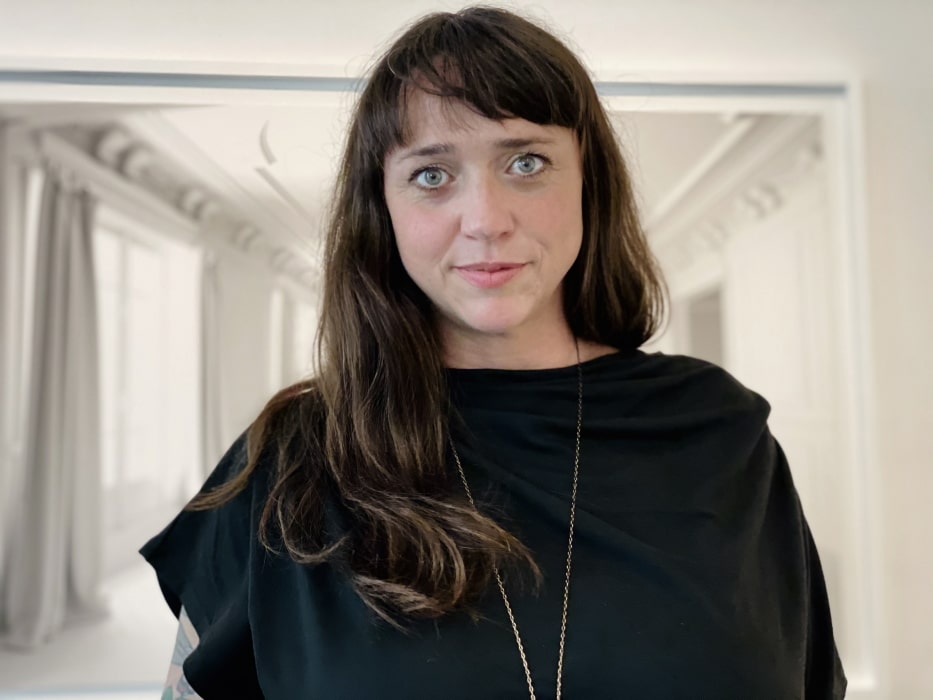Personal
Luisa, imagine if the pandemic did not dominate our lives at the moment and we could meet in person. Where do we talk together?
We would meet at my gallery. I love to receive people there, and start talking about art by showing the exhibition. It gives me always a great pleasure, and it’s the way to show directly my work as gallery director and curator. Then, if the weather is nice, we could have a walk in the sunny Tempelhofer Feld, and probably sit for a coffée at one of the lovely Caffés in Schillerkiez, that to me is the hidden jewel of Neukölln: super vibrant culturally, and at the same time very calm and enjoyable.
Image above: Luisa Catucci – Portrait
Please add a few sentences about your CV.
I was born in the ancient city of Rome in the middle of the seventies and their cultural revolution. Being raised by an architect with a big passion for archeology, and by a baroque music singer, made me naturally interested in all the forms of human expressions. As a child I was often fascinated by art books featuring Old Masters works, and painting and drawing became to my eyes the maximum form of communication and reality’s alteration. I thought in a painting anything is possible, as they would be sort of Magical Places, where the freedom of the mind becomes an actual reachable target. Later, it was the frustration towards my luck of talent as a painter, and an absolute fascination for the multi faceted aspects of humanity that pushed me to investigate new forms of expressions, digging in different cultures, and subcultures. So after my studies in Communication Design, this curiosity pushed me to travel around Europe for many years, eager to join any kind of artistic adventure I could find.
In 2004 I landed in Berlin, and stayed.
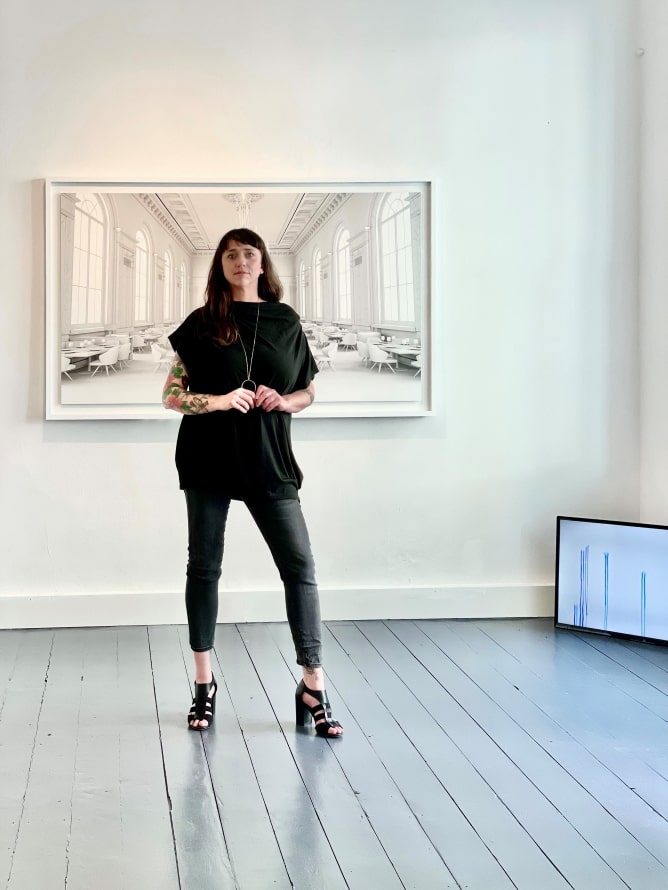
What are you most concerned about at the moment; what preoccupies you?
I am obviously preoccupied for the current state of things. Business is harder and slower than ever, and the light at the end of the tunnel is still small and feeble. But humanity went through much harder times and survived, so I am confident we will get out of this stronger, and with clearer ideas. I believe rough times are there to make us better.
How do you feel about breakfast?
I love decadent Sunday’s breakfast, with a rich, exquisite, and healthy banquet, but for this you need the proper time to enjoy it, so every other day of the week, two big cups of black coffee will do it.
What does the last hour of your day look like?
I love to sit with my partner, smoke a cigarette together, and have animated conversation on whatever topic, or simply about our day.
On the profession of gallerist
How did you become a gallerist?
By chance. I rented the shop originally with the intention to have there my artist studio, and maybe to share it with one or two other artists. The idea to have exhibitions in the front room was already in the plan, as 98% of my friends were artists, and there were a few that I really wanted to exhibit, but more as a creative space run by artists, than a proper art gallery. And it was like this for a few years, giving me enough time to make tonnes of mistakes, to learn as much as I could from them, to discover the proper art galleries world, and to suck in as much knowledge as possible from the many professional people I would meet along my journey.
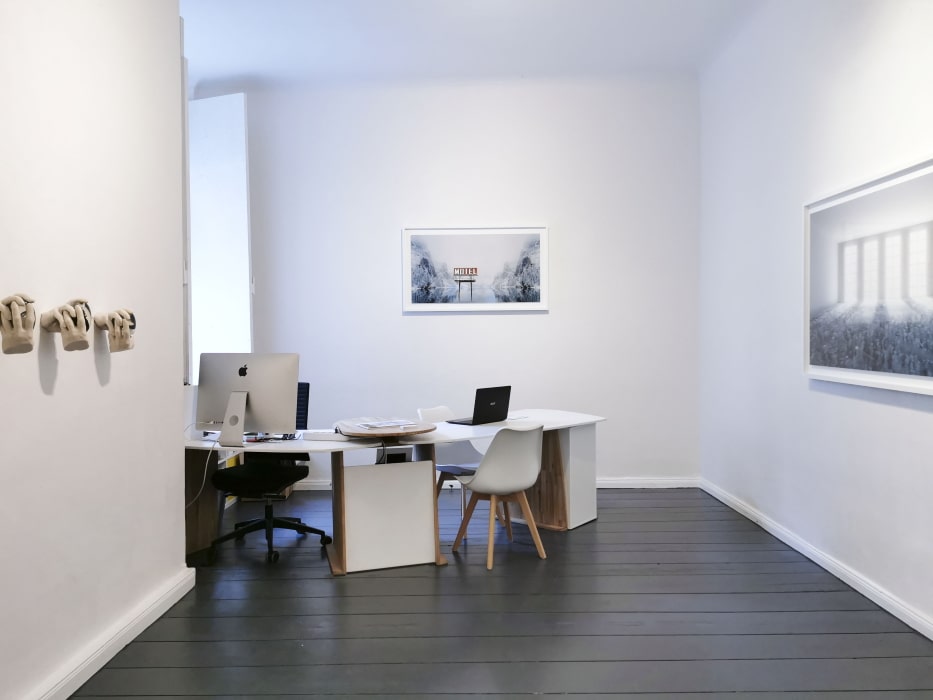
Why did you become a gallerist?
As I said I was very frustrated with my artistic production, that was very confused and not going where I would have liked it to go. I thought I could express with my art the feeling I have since early age, to be a sort of misfit, as there are too many aspects of society that seems to me just absurd. Instead, my art production turned out to be as banal as it comes, as it was inside me too much confusion, and I was listening too much to the artists in my surroundings that I considered to be “cool”. On the other hand, while I was curating the exhibitions I didn’t feel this pressure at all! And I did find out I could investigate different topics, very important to me, by selecting art pieces from different artists, and with much satisfying results than with my own artistic practice! The artists became my colors, and empty spaces and walls my canvases. I discovered the creative vision of an art curator.
At that point, I transformed the art platform into my Luisa Catucci Gallery.
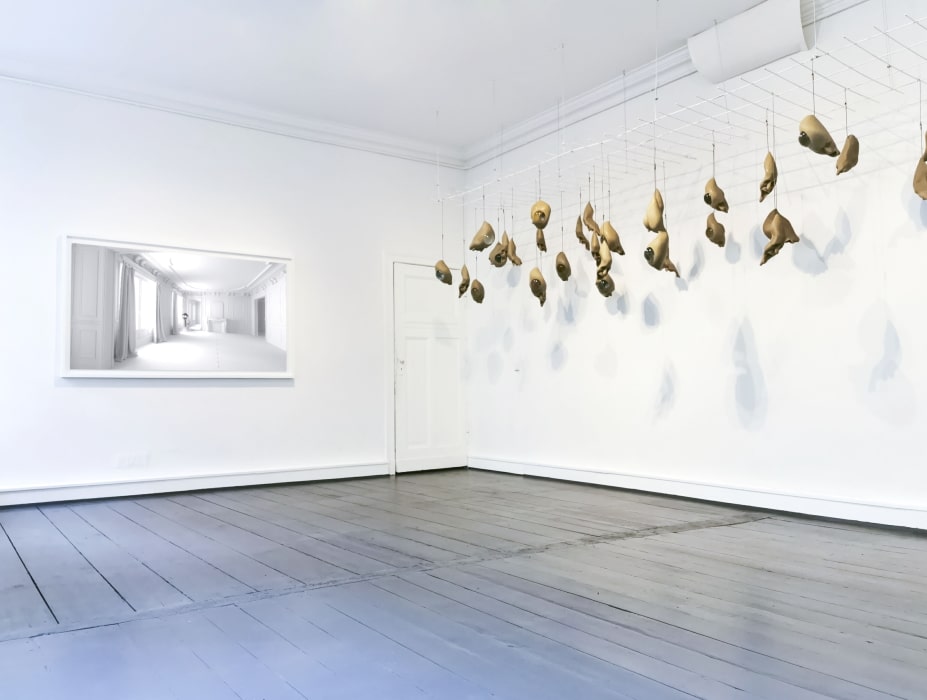
Why in Berlin?
I landed in Berlin in 2004, without a concrete project. Since the very beginning Berlin seemed to me like the land of opportunities, with its incredible cultural turmoil and the constant changes. Coming from an ancient and quite static place, the vitality of Berlin conquered my heart. And so I stayed.
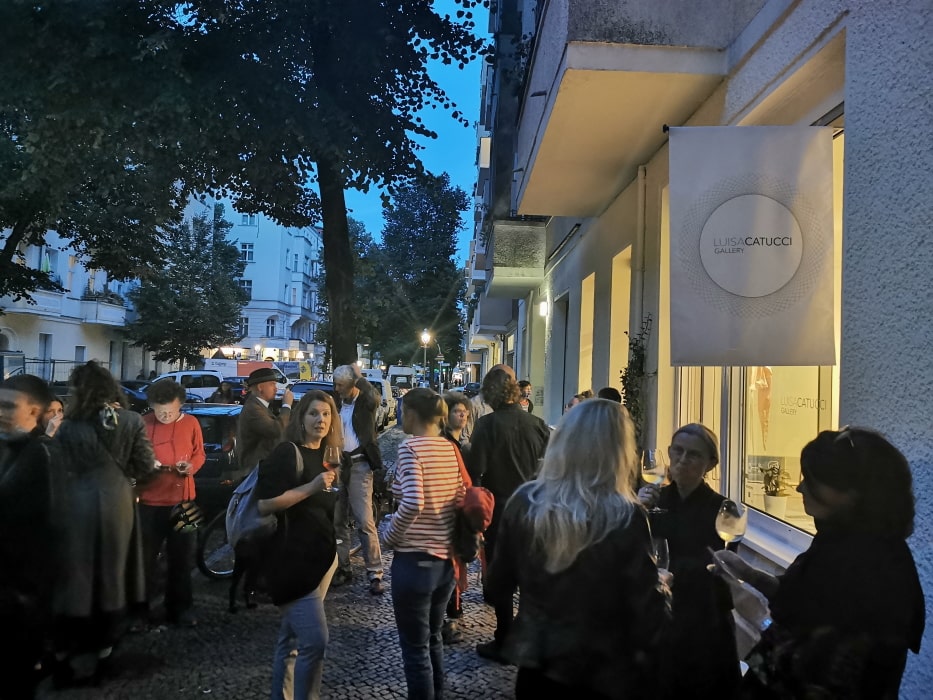
What were your early years like?
As a child I was one of those that daydream for most of the time. As a teenager I started very strongly to yearn for independence, because I’ve seen it as the tool to be free, to dream. I was very curious and dynamic, still very confused and quite angry. Constantly looking for something behind. Still am, just with less anger. I’ve always stumped around life at marching at the rhythm of my own drum, even when the rhythm was syncopated, out of time, or simply absurd. But I loved it! And I couldn’t do differently- it is still like this – just with more knowledge and control of the percussion. Still, I often find myself apologizing to my mother for the rough time I gave her. And she laughs, knowing my daughter is repaying me with the same coin. (Mama is so proud!).
What would you recommend to your younger self today?
Be less angry! Remember the words of Tom Robbins that changed your life by clicking in your brain: “I believe in everything; nothing is sacred. I believe in nothing; everything is sacred. Ha Ha Ho Ho Hee Hee.”
The profession of gallerist is often wrongly underestimated. Which of the activities of a gallerist are the most challenging in your view?
Being a gallerist is a great job. But I also believe that for doing this job one needs a real passion and an important amount of folly, on top of the proper preparation. Yet, often a gallery director is imagined as just the person presenting expensive art with a glass of wine, surrounded by fancy people, talking about fancy art topics, possibly using redundant words nobody understands, and that’s it. The reality is obviously totally different.
A priori of the exhibition’s concept and presentation, there is the whole logistic part to take care of: transport, storage, management, bureaucracy, planning, sale strategies, while being constantly up to date with what’s going on with the market, as well as the nonstop networking and promoting. These are to me the hardest aspects of the job. I definitely prefer the curatorial sides of this profession: exhibition concept’s, combining the artists, writing the texts, setting up, hosting artist’s talks, and touring the visitors around the gallery. But the “challenging” aspects of the job are as much as important! I do believe to be a gallerist is like being a lover, if you do not put in daily job care and dedication, it makes no sense to even try on doing it.

Do galleries have an educational mission? If so, in what do you see this?
To me galleries should absolutely have an educational mission! And to me it’s the one to show to people that there are millions of different perspectives, on any topic. And that there is beauty in every one of them, even the ones we do not embrace. To me evolution and emancipation comes from the contamination of the point of view, where new perspectives are born.
What constitutes the art you represent with your gallery?
The gallery’s program focuses mainly on art exhibitions, inspired by ecological, social and existential matters, through a variety of media, including photography, video, painting, sculpture and installation.
What is the target of art from your point of view?
To nourish the soul.
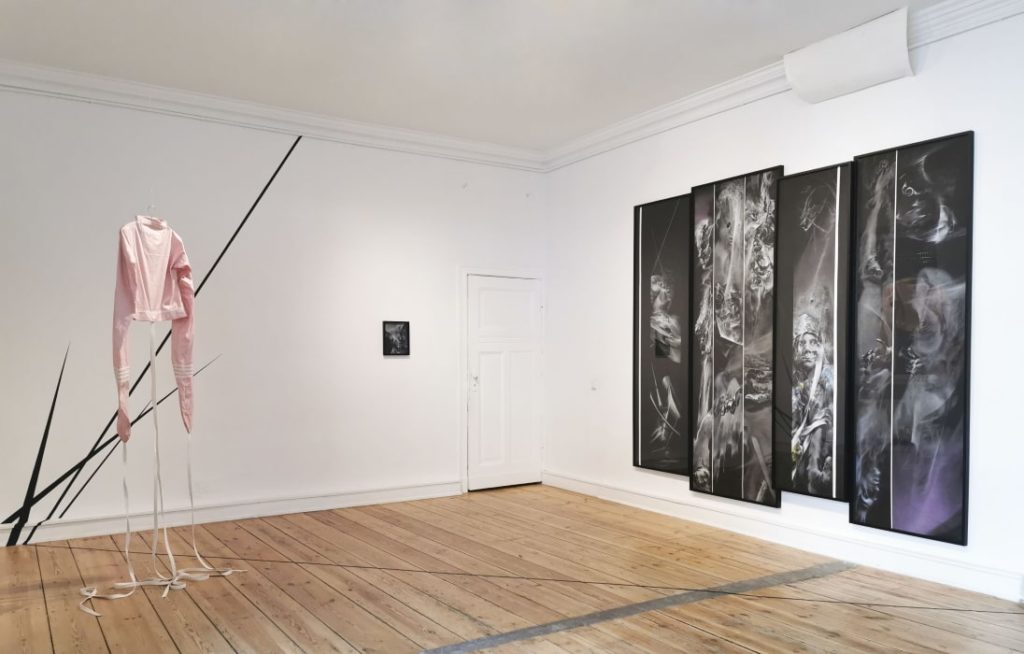
The demands on artists have increased in recent years. What do you think an artist needs to be capable of today?
Talent, alongside with professionalism, and a predisposition to be social. I think the Bohemian vision of artists, it’s long over. To be properly an artist today is a very very very hard job, despite the common thought, and it needs full commitment.
Artist selection – what criteria do you use?
It first starts with a positive emotional response to an artist’s work. Then is by valuing the person behind the art, not only from the professional perspective, but also the human, since I work quite closely with my artists, and don’t want to do so with people I do not appreciate.
Does one part with artists?
Of course it happens! We are all just human, and separation is something we can face in several aspects of our lives, and in any work field. It just needs to be handled with grace.
In an issue of Monopol (7-8/2019) Gerhard Richter is quoted on the state of contemporary art with the words: “Art is liberated from knowledge.” He paints a sceptical picture of the state of contemporary art. What is your opinion of this thesis?
The hyper-productive times we live in. We are too many, and there is too much of everything. Artists and art galleries included. And this means often the quality, and the knowledge, are pretty much absent.
Name a contemporary artist who, in your opinion, currently represents one of the most interesting artistic positions.
I have a humongous crush on Olafur Eliasson’s work since many years, and it doesn’t fade.
Is art subject to trends? If so, what are the trends and which ones are currently playing a central role?
Of course there are trends and currents in art, since the beginning of times.
Now there is the rush on virtuality and on the online transposition of life, that personally drives me insane, as I believe life and art need to be experienced directly.
Please provide some information about your current or upcoming exhibition.
Our current exhibition is a dialog between the Italian meta-photographer Aqua Aura and the Spanish artist Lidó Rico, that is inspired at the same time by the unsettling feelings we all experienced during the series of lockdowns and restrictions due to the Covid emergency, and by the Inferno’s book of Dante Alighieri’s “Divina Commedia”, in particularly by his description of the Limbo “Tra Color Che Son Sospesi” (Amongst Those Who Are Suspended), that gives the title to the show.
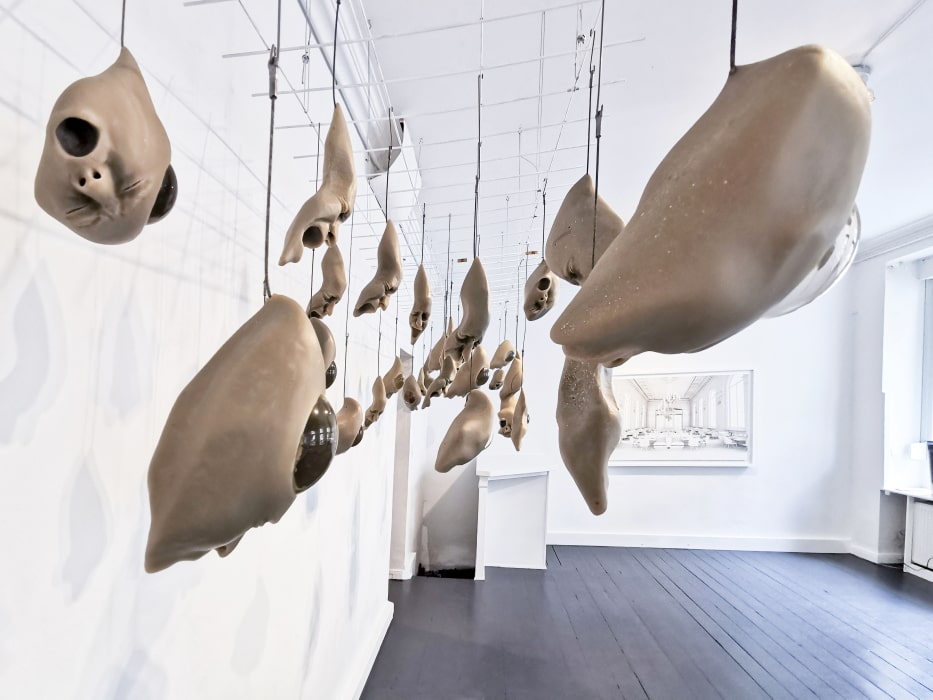
If a lack of time, courage or financial resources were not a factor, what exhibition project would you like to realize one day?
I once dreamt I was opening a museum on the hills around Orvieto, in Umbria, Italy, together with the Chilean-French filmmaker, artist and writer Alejandro Jodorowsky, featuring art inspired by the Platonic concept of Catharsis. The Museum was shaped like an octagonal diamond rising directly from the rocky ground, and its shape was attracting and channeling cosmic energies. The project for the Museum was made by the notorious Architect Daniel Libeskind. What a glorious dream, how I would love to make it come true! The three of us were an amazing team! Ah, ah!
On the art market
How do you respond to the thesis that art is elitist and something reserved only for intellectuals or the upper ten thousand?
I think this applies to the art market, but not at all to Art itself! Art as an intellectual and cultural form, as mental nourishment, it is for anybody equipped with a sensible soul for it. A less educated person could miss on some cultural references fundamental to appreciate some type of art, and probably not recognize its worth (Duchamp’s Fountain comes to my mind, to give an easy example), but the same person could be absolutely astonished in front of other kind of art, or even being very stimulated by the “absurdity” of seeing a pissoire out of its normal contest. I can assure you that the sensibility for Art has nothing to do with intellectualism or the upper class. You can have intellectuals despising visual arts, and not cultured people being ravished in front of a painting. Having my gallery in an area that used to be extremely poor and popular, with lots of cultural and social problems, the biggest satisfaction I had comes from a bunch of Arabic kids that used to harass us quite a lot around 10 years ago. But once I’ve been able to establish a proper contact, by hooking them with a spontaneous – and even quite improbable – workshop on tags and masks, they reveal themselves to being extremely curious, interested, and fascinated by art! They just felt that my gallery was something reserved for others, and felt excluded. After years – now they are adults – they keep coming from time to time to check the shows.
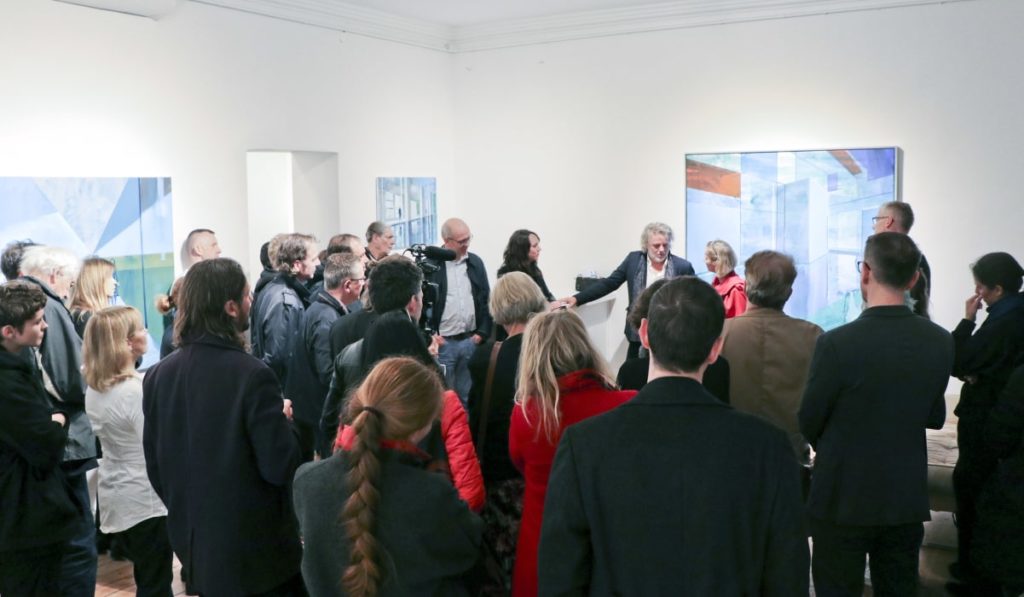
How do you assess the current development of the art market? Is there even such a thing as an art market?
The art market is a very complicated one, as there are very few customers respect any other market, but as many competitors, contrarily of most markets. You cannot foresee its outcome and success just by planning. For example, you could decide for a strategy of participating in art fairs, but although the money you have to invest for such a strategy is clear, there is no way to warranty the success of the operation, and you could end up by losing the investment, partially or even in full. And the same is for the exhibitions. Of course, you could decide to exhibit only artists with regular buyers, and proper notoriety, but again there can’t be a mathematical certitude of success. There is always a gambler side on this business, in my opinion. Then there is the online market, that even if it possibly works for the very big names, I think it’s a bubble for the small and mid-career artists and galleries.
What do you say to the thesis that some galleries, through their habitus and the sterile white cube atmosphere, partly create threshold fears among newcomers interested in art?
I think the white cube atmosphere on one side for sure underline a sense of elitism, but on the other side it helps emphasize the art and reveal its inner sacredness. Sometimes instead it is just a too sterile ambient, and it does the opposite effect. I did see art exhibitions in any kind of location possible, and I sincerely believe any ambient could work, with the right pieces and the proper set up.
Even in my gallery I decided to include the old coal-cellar, with blacken bricks, pipes, and rough ground in the exhibition’s room. Not for every show, because I believe it doesn’t work for every type of art, but I love the contrast with the white clean rooms upstairs, and my visitors and clients do too.
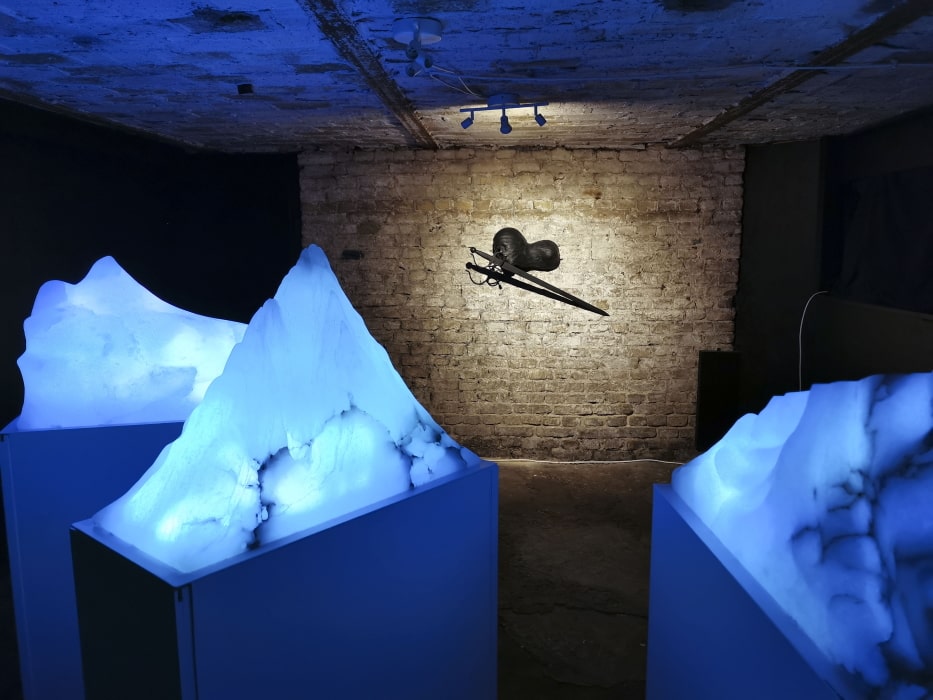
At the moment, we keep reading about the death of galleries. Is the classical model obsolete?Medium-sized galleries in particular are struggling. To what extent will these circumstances change the art market and the gallery model in general?
If the medium-sized galleries, that are usually those presenting emerging or mid-career artists, bringing in the freshness in the market, end up to die, I foresee the art market becoming the most boring, uninspiring, self celebrating closed circle, with and for very elitist participants.
On the other end, I understand the struggle of us, Medium-Size galleries, is exactly due to the fact that we present emerging or mid-career artists, often not renown enough, and it is hard for a collector to decide to risk money on a young artist that maybe, beside the talent, will not make it to become properly known. During these uncertain times, where most are struggling financially, to aim only to a client’s coups de foudre for an art pieces, it doesn’t work. So I think we should focus to accompany more our selected artists through their careers, making them truly our protégés, focusing a little less on just the imminent sale aspect, which of course is important, but it shouldn’t be the target, instead of just a mean. That I believe would consequentially help the sales aspect, because it would reassure the buyer that an investment on one of your emerging of mid-career artist it is worth to be done, beside the love for the piece itself.
In your view, what are the essential factors for a commercially successful gallery?
An attentive selection of the artists, honesty, quality, and tonnes of hard work.
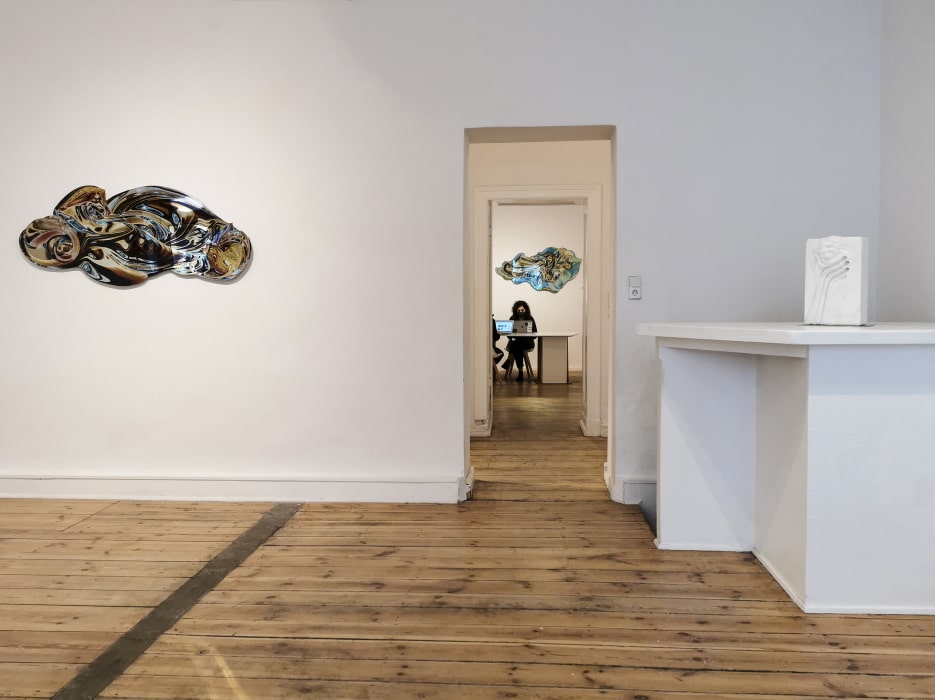
What significance do art fairs play for your gallery model?
They are ways to make contacts and make your artists better known, by reaching to people that wouldn’t organically step into you.
In the past, art fairs were of eminent importance. After Corona, the question is whether they will ever achieve this importance again. How do you assess this and how important will art fairs be in the future?
I think art fairs will also have to review their model, and become more attentive to the quality, especially those featuring medium-size galleries. In the past years art fair and online sale marketplaces popped-up like mushrooms in a forest after a rainy day. How could they all be successful and of quality? I think this is the major problem of our contemporary society: quantity vs quality, because this is generating monsters, in so many aspects. I think we should all become more essential, while rising the quality, and by quality I mean without neglecting the fair and ecological and ethical aspect of things. And this I believe to be valid for any sector, not only the art market.
The presentation of art on the World Wide Web has increased massively in the last year. To what extent do you believe in the online sale of art?
While on one side I appreciate reaching many people through the internet, making them aware of my gallery and our work, as much as I appreciate the possibility to take a glimpse on the work of so many artists globally, I cannot stand this transposition of the real life into the virtual sphere, even as a reaction of the lockdown situation. Online you can have an idea, you can get a little inspiration, but art -as life- must be experienced LIVE.
Even for the online sale of art, I believe in it to the extent that if a collector has already one artist in her/his collection, and want to buy another piece by that specific artist, it could happen online, but in my experience there are no chances for an unknown emerging young artist’s work.

On the Berlin art scene
In terms of the number of art spaces, Berlin is one of the world’s top metropolises for buying art, along with New York and London. However, not nearly as much art is turned over here as in the other two cities. What do you think needs to happen to make Berlin more interesting for international art collectors?
I think we should all take a moment of self reflection, and valuating if we are doing a proper job or not, and if we are aiming at local buyers or international ones. Despite the globalization, there are still different aesthetic trends within nations and cultures, and not always the concept of beauty corresponds.
What does the Berlin art scene need? What is it missing?
….
Your tips for the three currently most exciting galleries in Berlin?
Michael Fuchs Galerie, Galerie Thomas Schulte, and between the young galleries Bermel von Luxburg.
Your tips for the three currently most exciting project spaces in Berlin?
…..
Which three art museums – also worldwide – should one have visited from your point of view?
Tate Modern, MoMa, Guggenheim Bilbao
Thank you so much, Luisa.
Luisa Catucci Gallery
Allerstraße 38, 12049 Berlin-Neukölln
Tel. +49 176 20404636
info@luisacatucci.com || www.luisacatucci.com
Instagram: www.instagram.com/luisacatucci_gallery
Facebook: www.facebook.com/luisacatuccigallery
Twitter: www.twitter.com/CatucciGallery
Youtube: www.youtube.com/channel
In times of Corona, when travel, studio visits and personal contacts are inappropriate or even impossible, the written interview remains an important medium to introduce personalities of the art world, to spread their messages and to stay in touch with art lovers. The interviews are not edited or shortened by the editors and are always reproduced in original sound. Therefore, we do not translate the interview into English or German unless submitted by the interviewee.


